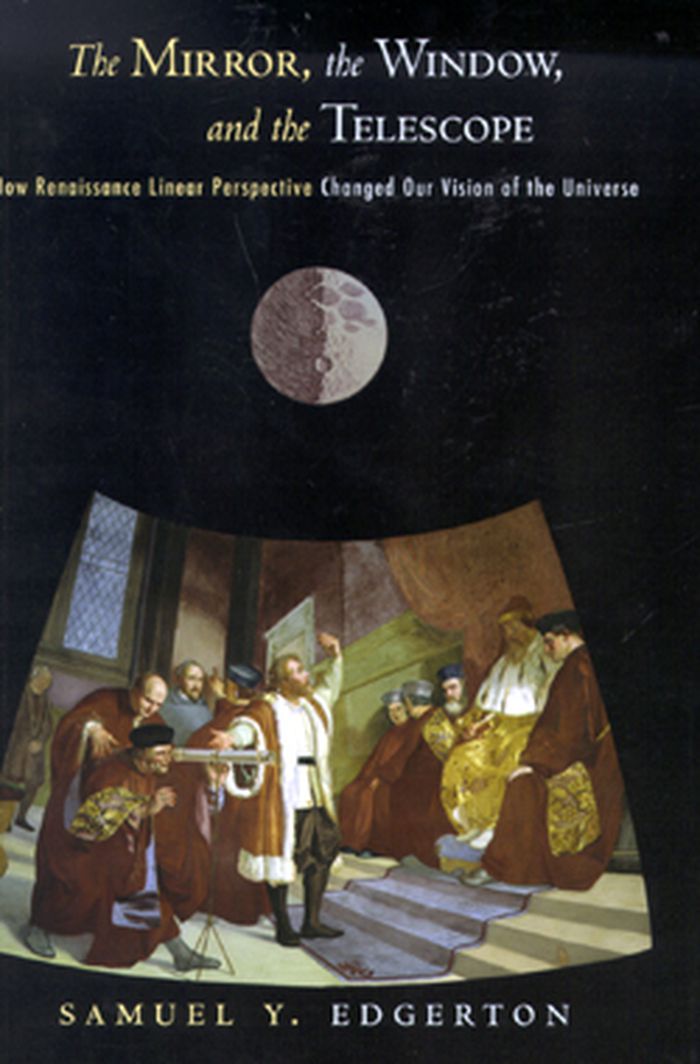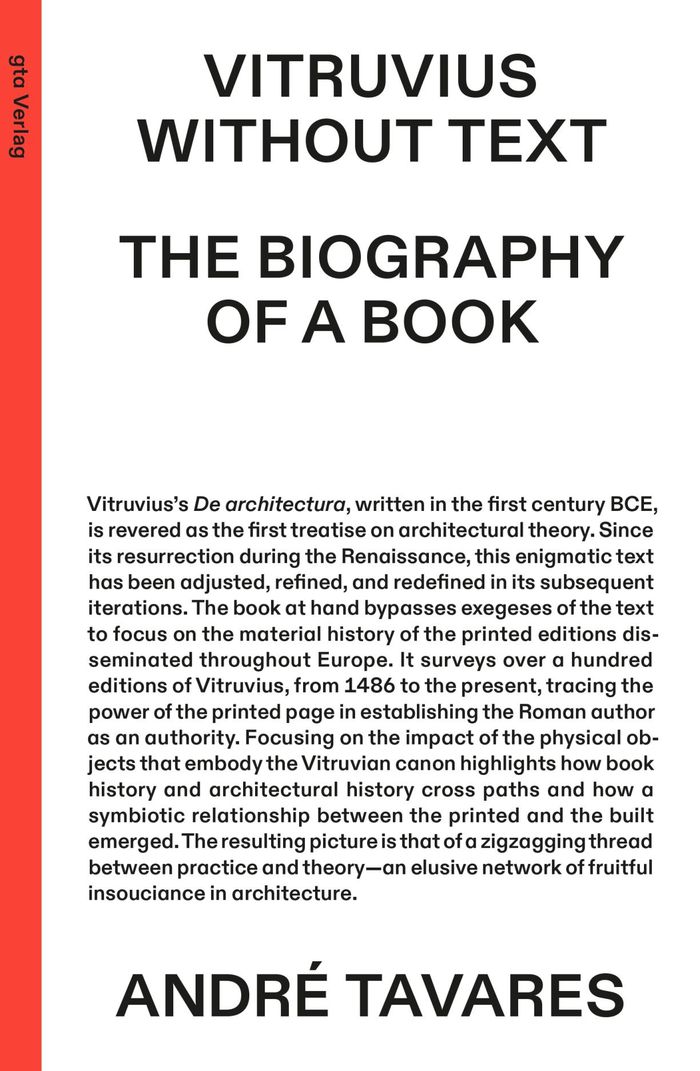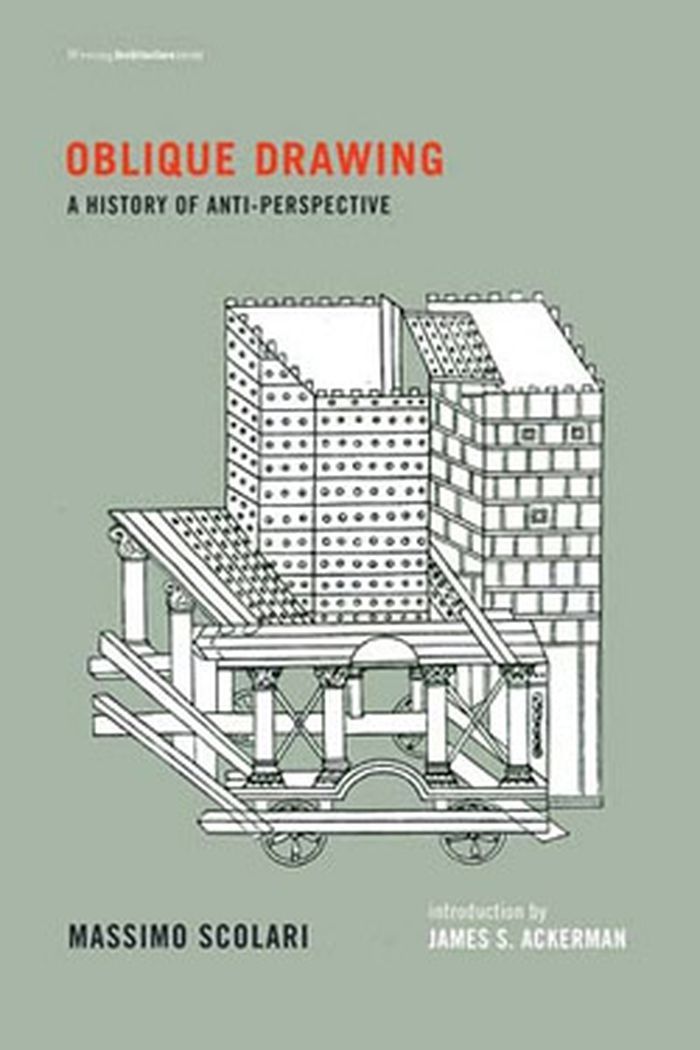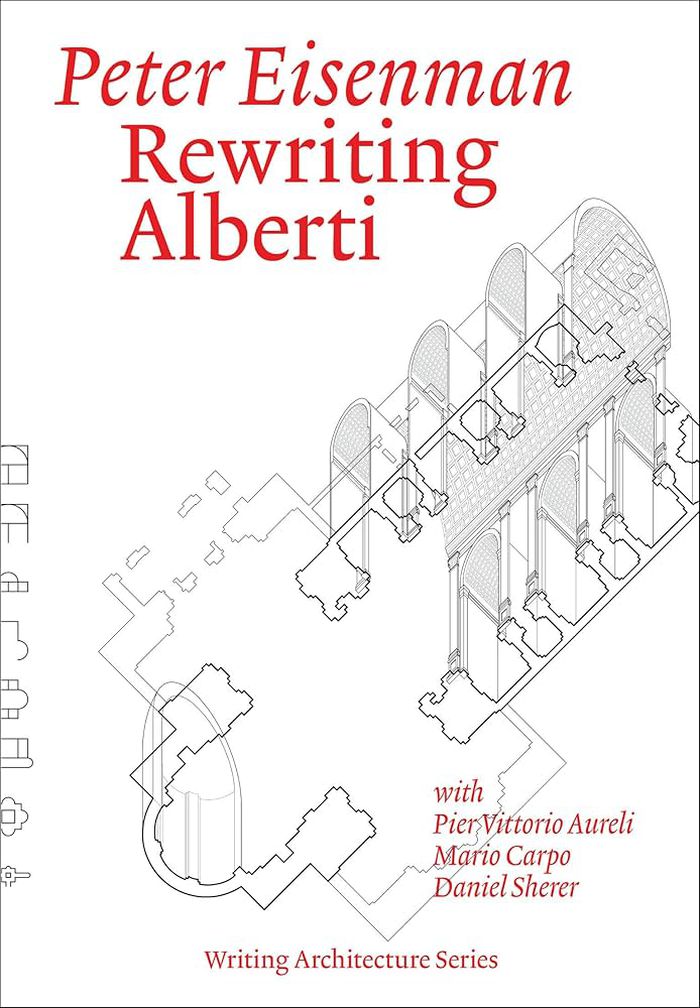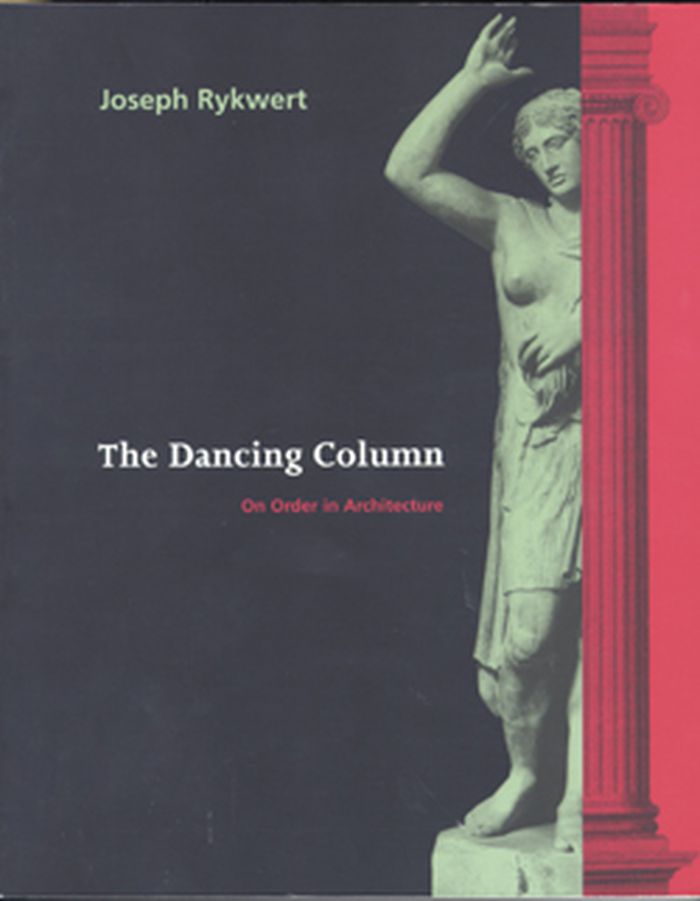$25.00
(available to order)
Summary:
In this publication, Edgerton retells the fascinating story of how perspective emerged in early fifteenth-century Florence, growing out of an artistic and religious context in which devout Christians longed for divine presence in their daily lives. And yet, ironically, its discovery would have a profound effect not only on the history of art but on the history of science(...)
The mirror, the window, and the telescope : how Renaissance linear perspective changed our vision of the universe
Actions:
Price:
$25.00
(available to order)
Summary:
In this publication, Edgerton retells the fascinating story of how perspective emerged in early fifteenth-century Florence, growing out of an artistic and religious context in which devout Christians longed for divine presence in their daily lives. And yet, ironically, its discovery would have a profound effect not only on the history of art but on the history of science and technology, ultimately undermining the very medieval Christian cosmic view that gave rise to it in the first place.
Architectural Theory
$30.00
(available to order)
Summary:
Since Greek antiquity, the human body has been regarded as a microcosm of universal harmony. In this book, an international group of architects, architectural historians, and theorists examines the relation of the human body and architecture. The essays view well-known buildings, texts, paintings, ornaments, and landscapes from the perspective of the body's physical,(...)
Architectural Theory
April 2005, Cambridge, Massachusetts
Body and building : essays on the changing relation of body and architecture
Actions:
Price:
$30.00
(available to order)
Summary:
Since Greek antiquity, the human body has been regarded as a microcosm of universal harmony. In this book, an international group of architects, architectural historians, and theorists examines the relation of the human body and architecture. The essays view well-known buildings, texts, paintings, ornaments, and landscapes from the perspective of the body's physical, psychological, and spiritual needs and pleasures. Topics include Greek temples; the churches of Tadao Ando in Japan; Renaissance fortresses and paintings; the body, space, and dwelling in Wright's and Schindler's houses in North America; the corporeal dimension of Carlo Scarpa's landscapes and gardens; theory from Vitruvius to the Renaissance and Enlightenment; and Freudian psychoanalysis. The essays are framed by an appreciation of architectural historian and theorist Joseph Rykwert's influential work on the subject.
Architectural Theory
books
Description:
304 pages : illustrations ; 26 cm
New York : Rizzoli, 1996.
Too much is never enough / by Morris Lapidus.
Actions:
Holdings:
Description:
304 pages : illustrations ; 26 cm
books
New York : Rizzoli, 1996.
books
$67.50
(available to order)
Summary:
Since Greek antiquity the human body has been regarded as a microcosm of universal harmony. In this book an international group of architects, architectural historians, and theorists examines the relation of the human body and architecture. The essays view well-known buildings, texts, paintings, ornaments, and landscapes from the perspective of the body’s physical,(...)
Architectural Theory
November 2001, Cambridge, Mass.
Body and building : essays on the changing relation of body and architecture
Actions:
Price:
$67.50
(available to order)
Summary:
Since Greek antiquity the human body has been regarded as a microcosm of universal harmony. In this book an international group of architects, architectural historians, and theorists examines the relation of the human body and architecture. The essays view well-known buildings, texts, paintings, ornaments, and landscapes from the perspective of the body’s physical, psychological, and spiritual needs and pleasures. Topics include Greek temples; the churches of Tadao Ando in Japan; Renaissance fortresses and paintings; the body, space, and dwelling in Wright’s and Schindler’s houses in North America; the corporeal dimension of Carlo Scarpa’s landscapes and gardens; theory from Vitruvius to the Renaissance and Enlightenment; and Freudian psychoanalysis. The essays are framed by an appreciation of architectural historian and theorist Joseph Rykwert’s influential work on the subject. Written for a symposium in honour of Joseph Rykwert held in March 1996 at the University of Pennsylvania.
books
November 2001, Cambridge, Mass.
Architectural Theory
books
Description:
8 volumes : illustrations (some color), maps, portrait, charts (tables), plates ; 26 cm
Oxford University, London, Great Britain : Clarendon Press, 1954-1984., ©1954-1984
A history of technology / edited by Charles Singer [and others].
Actions:
Holdings:
Description:
8 volumes : illustrations (some color), maps, portrait, charts (tables), plates ; 26 cm
books
Oxford University, London, Great Britain : Clarendon Press, 1954-1984., ©1954-1984
$46.95
(available in store)
Summary:
''De architectura'', written by Vitruvius in the first century BCE, is revered as the first treatise on architectural theory. Since its Renaissance resurrection, the enigmatic text has been adapted, refined, and redefined in subsequent iterations. ''Vitruvius without text'' bypasses critical interpretations to focus on the material history of the printed editions that(...)
Vitruvius without text: the biography of a book
Actions:
Price:
$46.95
(available in store)
Summary:
''De architectura'', written by Vitruvius in the first century BCE, is revered as the first treatise on architectural theory. Since its Renaissance resurrection, the enigmatic text has been adapted, refined, and redefined in subsequent iterations. ''Vitruvius without text'' bypasses critical interpretations to focus on the material history of the printed editions that appeared throughout Europe. It surveys over 100 editions from 1486 to the present, tracing the power of the printed page in establishing the Roman author as an authority. By focusing on the impact of the physical objects of the Vitruvian canon, it highlights how the history of printing and architecture intersect to form a symbiotic relationship.
Architectural Theory
$46.95
(available to order)
Summary:
Scolari's illustrated studies show that illusionistic perspective is not the only, or even the best, representation of objects in history; parallel projection, for example, preserves in scale the actual measurements of objects it represents, avoiding the distortions of one-point perspective. Scolari analyzes the use of nonperspectival representations in pre-Renaissance(...)
Oblique drawing : a history of anti-perspective
Actions:
Price:
$46.95
(available to order)
Summary:
Scolari's illustrated studies show that illusionistic perspective is not the only, or even the best, representation of objects in history; parallel projection, for example, preserves in scale the actual measurements of objects it represents, avoiding the distortions of one-point perspective. Scolari analyzes the use of nonperspectival representations in pre-Renaissance images of machines and military hardware, architectural models and drawings, and illustrations of geometrical solids. He challenges Panofsky's theory of Pompeiian perspective and explains the difficulties encountered by the Chinese when they viewed Jesuit missionaries' perspectival religious images. Scolari demonstrates the diversity of representational forms devised through the centuries, and shows how each one reveals something that is lacking in the others.
Architectural Theory
Rewriting Alberti
$45.95
(available in store)
Summary:
Much has been written about Renaissance architect Leon Battista Alberti’s mantra of part-to-whole as one of the continuing conditions of architecture. While this underlying thesis has often been repeated in the annals of architectural history and theory, architects have rarely questioned the idea. In ''Rewriting Alberti'', architect Peter Eisenman suggests, however, that(...)
Architectural Theory
October 2025
Rewriting Alberti
Actions:
Price:
$45.95
(available in store)
Summary:
Much has been written about Renaissance architect Leon Battista Alberti’s mantra of part-to-whole as one of the continuing conditions of architecture. While this underlying thesis has often been repeated in the annals of architectural history and theory, architects have rarely questioned the idea. In ''Rewriting Alberti'', architect Peter Eisenman suggests, however, that Alberti provoked a radical discourse beyond the part-to-whole dialogue featured in his Ten Books of Architecture. Eisenman’s in-depth analysis of Alberti’s five built works reveals a disjunction between the architect’s buildings and theoretical writings, suggesting a new relationship of form to meaning based on the fragmentation of homogeneous space. ''Rewriting Alberti'' includes contributions by Pier Vittorio Aureli, Mario Carpo, and Daniel Sherer. Carpo, an architectural historian and critic, theorizes that Alberti’s work initiated an idea of the discipline as a notational system akin to contemporary computational logics. By way of comparison, Sherer, an architectural historian, reconsiders critic Manfredo Tafuri’s readings of Alberti, and architect and theorist Aureli draws on Alberti to propose another idea of the architectural “project.”
Architectural Theory
$50.00
(available to order)
Summary:
For centuries, architectural theory, discourse and agency have been based on diurnal and solar paradigms. References to night in Vitruvius’s De architectura are few, and the same absence is notable in Renaissance treatises by Alberti or Palladio. It was not until the 19th and 20th centuries that the invention and institutionalization of artificial light in private and(...)
July 2024
Nocturnal history of architecture. Column issue 2
Actions:
Price:
$50.00
(available to order)
Summary:
For centuries, architectural theory, discourse and agency have been based on diurnal and solar paradigms. References to night in Vitruvius’s De architectura are few, and the same absence is notable in Renaissance treatises by Alberti or Palladio. It was not until the 19th and 20th centuries that the invention and institutionalization of artificial light in private and public spaces gradually transformed conceptions of night in the architectural discipline. This volume offers the first attempt at a nocturnal history of architecture. What emerges from the studies is the thesis that the identity of human beings—across time and their domestic, professional and cultural spaces—is powerfully determined by the parameters of nighttime. By analyzing and studying "night scenes," this book reveals how the night is a laboratory for the development of new forms of conceptualizing space and, ultimately, of living.
$65.00
(available to order)
Summary:
Joseph Rykwert, a professor of architecture at the University of Pennsylvania, has contributed to the body of work about architecture a wide-ranging study of the use of the human figure in the discipline, particularly in columns. Rykwert plunges deep into architectural history, tracing the development of the classic orders from Greece to Rome and on through the(...)
The dancing column: on order in architecture
Actions:
Price:
$65.00
(available to order)
Summary:
Joseph Rykwert, a professor of architecture at the University of Pennsylvania, has contributed to the body of work about architecture a wide-ranging study of the use of the human figure in the discipline, particularly in columns. Rykwert plunges deep into architectural history, tracing the development of the classic orders from Greece to Rome and on through the Renaissance in France and Italy. He says the relationship between the human body and architecture is "deeply ingrained in all recorded architectural thinking." He especially sees a close tie between the body and the column, the essential building block of architectural order.
Architectural Theory
